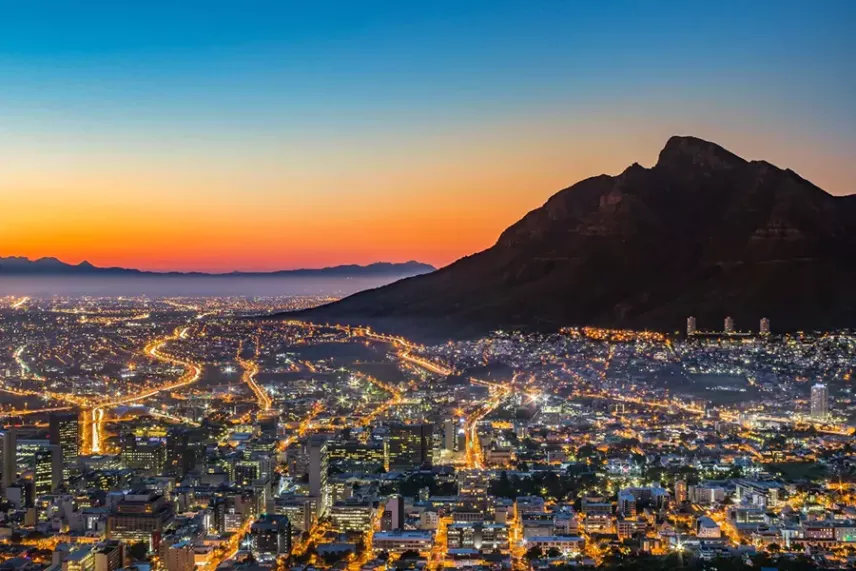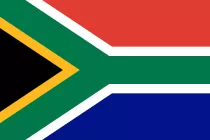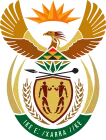South Africa

Geographical Location of South Africa
South Africa is a parliamentary republic in the south of the African continent. In the east the country is washed by the Indian Ocean, and in the west by the Atlantic Ocean. In the north, South Africa borders Namibia, Botswana and Zimbabwe. In the east it borders with Mozambique and Eswatini. To the east is also the country of Lesotho, surrounded by South Africa. Most of the country is a gigantic inland plateau high above the sea. The Drakensberg mountain range extends from northeast to southeast. Along the nearly 300-mile coastline are narrow strips of fertile land.
South Africa has a large diversity of species. There are more than 20 national parks and reserves in the country. They protect rich wildlife from hunters and human impacts.
The east coast of the country has a subtropical and humid climate, but most of the country is drier and temperate, without large temperature swings. Temperatures in the country vary depending on latitude and altitude. Most of the precipitation falls during the country's summer months, from November to April. This is not the case on the west coast, where it rains the most in winter. Pollution in the form of acid rain leads to drying out and depletion of arable land.
South Africa is also experiencing water shortages. The problem was very acute for Cape Town in 2017–18, but effective measures to conserve water and rainfall have improved the situation. Water shortages are now critical for the densely populated town of Geberha, formerly Port Elizabeth, which could soon run out of water.
Brief History of South Africa
The indigenous Khoikhoi and San peoples have lived in South Africa for thousands of years, but few remain today. Bantu-speaking people arrived in the country about 1,800 years ago and are the ancestors of about 75 percent of the population.
When Portuguese ships arrived in South Africa in 1488, Europeans became interested in the country. In 1652, the Dutch founded the Cape Colony and began European colonization. Colonization resulted in almost all of the country's indigenous people being killed or enslaved. Britain occupied the Cape Colony in 1795. Conflict between the British and the Boers, descendants of the Dutch, sparked two wars before the British and Boers formed an alliance in 1910. The Union Constitution suppressed the civil and political rights of blacks.
The National Party won the elections in 1948 and introduced apartheid. These were laws that oppressed and denied Africans (and others who were not “white”) political, social, and economic rights. Apartheid faced widespread criticism internationally and from the South African liberation movement. In 1990, opposition politician Nelson Mandela was released after 27 years in prison. In 1994, the system of racial segregation was officially abolished. The first democratic elections took place that same year. The African National Congress (ANC) party won the elections and Mandela was elected president.
Society and Politics of South Africa
South Africa is a parliamentary republic where the president is the head of state and head of government. The country has nine provinces with their own parliaments, but the central government and the president have enormous power. The liberation movement and the African National Congress have been in power since the end of apartheid in 1994. Corruption has been a serious problem in recent years, and in 2018 then-President Jacob Zuma resigned amid corruption allegations. The African National Congress won elections in 2019, but received less support than before.
The country has a large degree of freedom of the press and association, and the constitution guarantees human rights and equality before the law. Although the apartheid era has ended, large social and economic differences still exist between different ethnic groups. White people, on average, have much higher income and wealth than black people. Crime is widespread, especially in poor areas.
Economy and Trade of South Africa
Since 1996, the ANC has pursued neoliberal economic policies with the aim of economic growth and increased employment. Today, South Africa is a middle-income country and one of Africa's largest economies. Increasingly large portions of the previously oppressed population became part of the middle class, and new groups were given opportunities for education and employment. Economic growth has led to increased investment in public services and infrastructure, but growth has slowed in recent years. The country's wealth remains unevenly distributed and unemployment is high. The poorest people often do not receive the assistance they need.
South Africa has always been one of the economic centers of Africa, and the country's stock exchange is the most important in Africa. Today, gold and precious stones account for 40% of the country's total exports, and the country is the world's largest producer of the metals manganese, platinum and chromium. South Africa has a free trade agreement with the EU, which is the country's most important trading partner along with China and the US.







